Paintings by the Great Masters | Fall 2008 - 2
Lots - 225-A
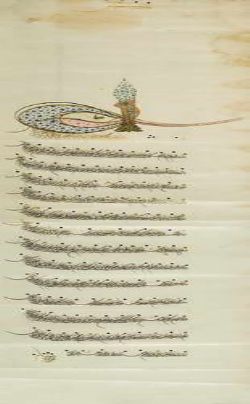
SULTAN MEHMED III - DECISION
Lot 176-A
CATALOGUE NOTES
Mülkname-i Humayun, with the signature of Sultan Mehmed III (1595-1603). Dated 1004 h (1595).
Size: 197.5 x 50 cm.
Price: 300,000 TL / $211,268.00
Auction: Fall 2008 - 2- Paintings by the Great Masters
Table : Table
Its gold monogram is illuminated with cloud motifs in various colors in the classical style.
Written in Konstantiniyye in celi divanî script using gold and black ink. About “The farms, meadows, pastures, winter pastures, arable lands and gardens with all their rights and boundaries in Hortaç, Olgarunu, Zağlanya, Gülmerde, Rogarak, Doğancı Tikforum, which were registered in the Defteri Hakani given to Mehmed Pasha, who was a vizier during the reign of Suleiman the Magnificent and passed from him to Lutfu Bey, and whose ownership was determined with customary duties and customs, were transferred to his daughter Sultan Zahide upon the death of Lutfu Bey. Upon the death of Sultan Zahide, the above-mentioned places were transferred to her son Mustafa in accordance with law and religion. Sultan Mehmed III approved the granting of these mutasarrıf rights to Mustafa, which were also approved by Suleiman the Magnificent.” 13 lines.
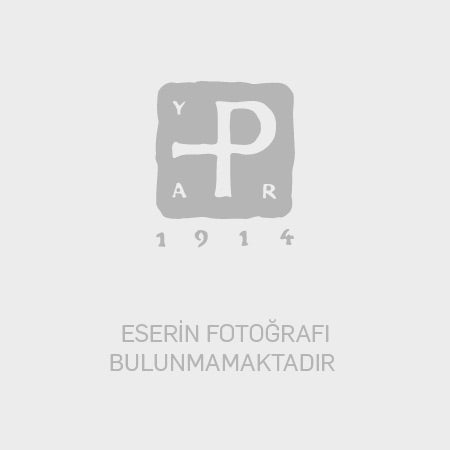
OTTOMAN LAKE EDITORIAL HOLY
Lot 176-B
Cylindrical in shape. Decorated with large gilded leaf and flower motifs on a brown background. 17th century.
Price: 5,000 TL / $326,800.00
CATALOGUE NOTES
Auction: Fall 2008 - 2- Paintings by the Great Masters
Table : Table
Size: Length: 55cm.
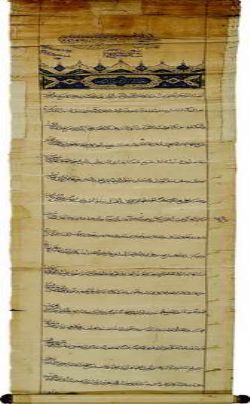
Endowment Charter
Lot 177
CATALOGUE NOTES
Tughra of Sultan Bayezid II (1481 - 1512). Dated h.888 (1483).
Size: 322.5 x 28.5 cm.
Price: 200,000 TL / $13,072,000.00
The edges of the tughra drawn in gold are written with very thin black ink. The inner and outer borders of the tughra and the pulpit sections are illuminated with cloud, leaf and flower motifs. The lower part contains the approval of the judges. The serlevha on the upper part of the foundation deed is illuminated with motifs bearing all the characteristics of the period in gold, navy blue, black and burgundy. The Besmele is in the middle of the serlevha. It is written in calligraphy on the rik using gold and black ink. “First of all, it starts with praise to Allah for the blessings He has given and greetings to our Prophet and my friends. The importance of learning knowledge, the importance of donating good and wealth for the benefit of others, the importance of donating good and wealth for the benefit of others are mentioned. It is stated that whatever is sown in the world (whatever good deed is done) will be reaped in the hereafter. It is stated that Defterdar Ahmed Bey B. Abdullah donated his wealth for the sake of Allah’s consent and that Allah will give his reward many times over. It is stated that the place of donation is the entire village of Ahmed Fakih, also known as Eceköy, in the Dimetoka District. It is stated that after this, this place cannot be bought or sold, property cannot be acquired and inherited. Ahmed Bey dedicates the trusteeship of the foundation to himself until his death. He stipulates that after his death, he will donate it to his children from generation to generation and after their generation ends, to the best of his slaves. When their generation ends, to the person chosen by the ruler of that time He leaves it. The trustees of the foundation are given the duty to look after the foundation and collect its revenues. He also stipulates that the foundation's revenues be given to certain officials: - He stipulates that a portion of the revenues be given to him. - He stipulates that thirty dirhams be given to the person who reads the Ikhlas Sura 12 times a day at his grave and gives it as a gift to his soul. - He stipulates that thirty dirhams be given to the person who opens and closes the grave's door and lights the lamps for those who come to his grave to read the Quran, as well as for the expenses of the lamp oil and the mat. - He stipulates that thirty dirhams be given to the rakabe (principal) of the foundation. - He stipulates that a portion be given to the food and drink needs of the naibm (judges) of the period. - Then he appoints Mudarris (university professor) Kasım as the trustee of the foundation. Then, court records are kept stating that these places have been dedicated and the testimonies of the witnesses are requested. Thus, it is decided in the presence of the judge that this village has definitely been dedicated. It is mentioned that those who try to change this foundation and who attempt to do so will deserve Allah’s punishment and will be cursed. It is also stated that the reward of the person who makes this foundation will be multiplied by Allah.” Witnesses: Mevlana Muslihiddin El-Kesteli, Mevlana Muhyiddin el-Hac Hasan, Sinan b. Mehmed, Ishak b. Ibrahim Great Vizier, Mevlana Hamid, Sinanüddin es-Suyusi, Mesih b. Abdulbay, Ahmed Çelebi Fenerli, Mevlana el Hac Muslihiddin Abdullah, Davut b. Abdulvedud, Sinan Çelebi Ohrili, Mevlana Muhyiddin. 49 lines.
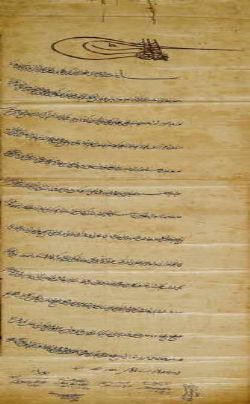
Berat (Deed of Assignment)
Lot 178
CATALOGUE NOTES
Sultan Bayezid II (1481 - 1512) tughra.
Size: 119 x 31cm.
Price: 150,000 TL / $9,803,900.00
Dated h.888 (1483). The edges of the tughra drawn in gold are written with very thin black ink. Written in Edirne with celi divanî script using black ink. “Due to the successful services of the Sultan, he grants the Ahmed Fakih Village affiliated to Dimetoka to the Defterdar Ahmed Bey to use as he wishes. He also grants the right to choose one of the ways of selling, using or donating this property. At the same time, this property will pass to his descendants and no one else will be able to interfere with it.” Witnesses: Kazasker İbrahim b. Halil, Vizier Hafız b. Abdülhayy, Treasury Defterdar Abdullah b. Yusuf, Vizier Mesih b. Abdullah, Vizier İshak b. İbrahim, Kazasker Abdüsamed. 13 lines.
It belongs to the Divan Poet Ahmed Rıdvan (Tütünsüz Ahmed Bey) Family.
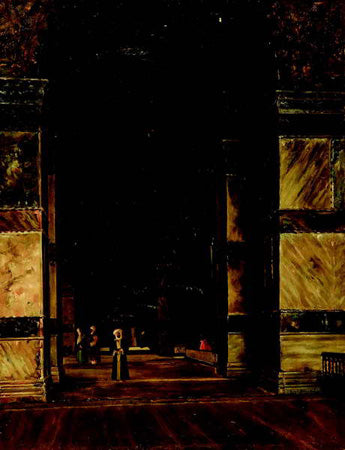
ŞEVKET DAĞ HAGIA SOPHIA in Osman Hamdi
Lot 179
CATALOGUE NOTES
Signed in Old Turkish. Oil on canvas. Very little restoration.
Size: 65 x 51 cm.
Price: 175,000 TL / $11,438,000.00
The interior of the Hagia Sophia Mosque, which points to the glorious past of Byzantium and the historical identity of the Ottoman Empire as an architectural unit with a masterpiece emphasis, offers an extraordinary beauty for Şevket Dağ, who has dedicated himself to the silence of spaces. This great master, who sees the unique atmosphere of a place of worship as the main subject of his paintings, delicately weaves and investigates the walls and historical texture of the civilization he is a part of in each of his paintings. In this unique spatial arrangement where the supporting columns swallow the worshippers, the artist includes a real personality from the period he lived in for the first time. Osman Hamdi, who shows himself as the main character of his paintings as a typical Easterner with his rosary in his hand, his caftan and beard, is right in front of us! This is undoubtedly not a real moment of encounter. Şevket Dağ places him in a real space to show his respect to a great master who, like him, has dedicated his entire life to the cultural and historical identity of the Ottoman Empire. After all, the whispers that circulate in the space, the hymns reflected on the walls, and all kinds of ethnographic elements that create the space are also great
features that he sensed and painted with pleasure and love.
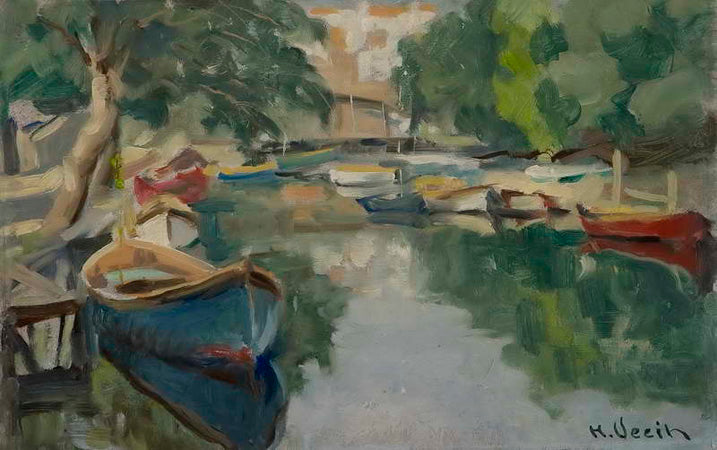
VECIH BEREKETOĞLU KURBAĞALIDERE
Lot 180
Signed. Oil on hardboard.
Size: 33 x 49 cm.
Price: 25,000 TL / $1,634,000.00
CATALOGUE NOTES
Almost like a self-portrait, Kurbağalıdere, which points to Hasan Vecihi Bereketoğlu's entire pictorial adventure, is seething with a riot of color and light... This stream, which is identical with the painter's name, is a unique piece of nature that contains all the beauties of its time within the urban texture.
This stream, which captivates a painter to the point of pushing him to paint the same subject throughout his life, was probably a microcosm for Bereketoğlu. This area, which is open to all kinds of perspective experiments and offers an ideal observation area to test the optical illusion of color from countless angles, must have been a nest where the artist felt at home. This landscape, with its small and large spots, color fountains winding around the hulls of boats, green meeting with blue, swallowing and melting all contours, is one of Bereketoğlu's most competent works.
VECIHI BEREKETOGLU
Hasan Vecihi Bereketoğlu was born in Rhodes in 1892. He is the son of Kazasker Bereketzade Cemal. He completed his primary and secondary school education in Egypt due to his father's civil service. After completing high school in Rhodes, he chose law as a profession. However, since he had been interested in painting since his childhood, he went beyond this field and devoted himself to painting. Bereketoğlu, who took his first lessons from Halil Pasha, continued at the Academy Julian in Paris. The artist is one of the founders of the Turkish Painters Society and the Fine Arts Union. He became a notable representative of the tendency he established and imposed for a long time at the 'Fine Arts Union'. The artist, who worked with the Impressionist art belief from the beginning, combined this belief with realism and produced powerful works. He created successful views and still lifes in terms of color with a workmanship reminiscent of Hikmet Onat.
Bereketoğlu works very comfortably and has a palette full of bright, transparent nuances.
The artist, who was also productive in his works on Community Centers, which have a special place in our recent art history, is also a productive painter. Bereketoğlu, who has many of his paintings in the Painting and Sculpture Museum and the National Library Collection, is one of those who contributed to the creation of Turkish painting.
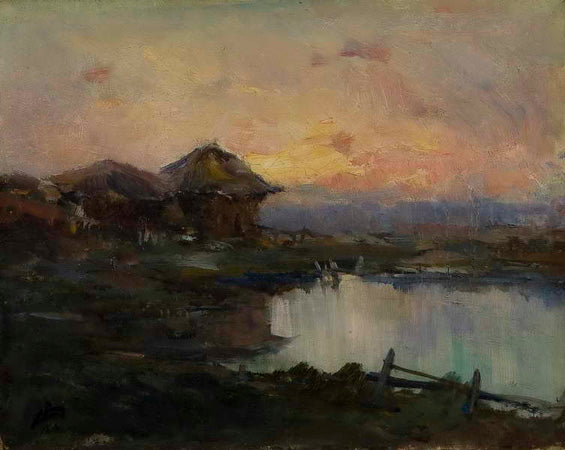
SAMI YETIK SUNSET
Lot 181
Signed in Old Turkish, dated 1328 (1910). Oil on canvas. Very little restoration has been done.
Size: 32.5 x 40.5 cm.
Price: 30,000 TL / $1,960,000.00
CATALOGUE NOTES
An indistinct cluster of houses on a background where blue and red intertwine, a small lake emerging between layers of paint... Sami Yetik shows and says very little in this painting. He has imprisoned a small moment in the world we live in in his painting.
He wants our gaze to wander on the surface, to talk to the layers of color we discover, to daydream about a small detail he shows us, to question what we know in the face of a landscape with certain boundaries that he takes by choosing only a tiny part of. He also wants us to draw time into ourselves at a moment when the sun sets and to sense the miracle that the art of painting performs on that limited surface.
SAMI YETIK
After completing his primary education at Şehzadebaşı Taşmektep, he continued at Çiçek Pazarı Rüştiyesi and Mülkiye İdadisi. With the encouragement of Osman Nuri Paşa, who was an art teacher at this school, he started his first painting studies. He met Hoca Ali Rıza at the Harbiye. Thus, his first artistic enthusiasms turned into a conscious choice. After graduating from the Harbiye as an officer, he became an art teacher at Baytar Askeri Rüştiyesi in Eyüp. He continued at Sinayi-i Nefise, which he graduated with honors in 1906. He was sent to France with the special permission of Mahmud Şevket Paşa. He worked in the workshop of Jean-Poul Laurens at the Julian Academy between 1910-12. When he returned home, he wrote articles requesting that the innovations he saw in Europe be included in the Sanay-i Nefise program. He taught art in Kuleli. He is one of the founding members of the Turkish Painters Association. He maintained a close friendship with Mehmet Ali Laga, with whom he was on the front lines during the Balkan War. While serving at the Bosphorus fortified position during the First World War, he depicted the war scenes he had the opportunity to observe closely in his paintings. He gave typical examples of this genre. He wrote articles on art in newspapers and prepared two albums for secondary schools. He wrote the book “Our Painters”, which is one of the source books of our art of painting, but the first volume of which was published in 1940. He took on active roles in the training of military painters.
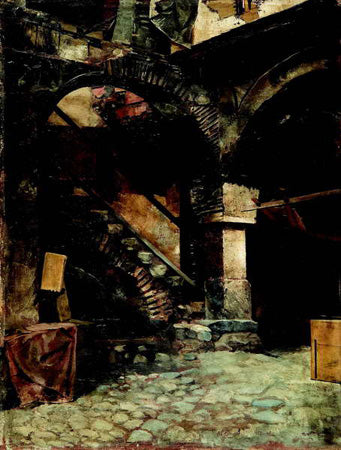
INSIDE OSMAN HAMDI HAN
Lot 182
CATALOGUE NOTES
Oil on canvas.
Size: 84 x 62 cm.
Price: 2,000,000 TL / $140,845,000,000.00
Provenance:
* An artist's collection in Beyoğlu, Istanbul.* M. Collection.* Private Collection.- It is on p.337 of the book "Opening to the West in Art and Osman Hamdi" prepared by Mustafa Cezar and published by İş Bankası Culture Publications in Istanbul in 1971.Portakal Art and Culture House Yıldız Palace/Armory Hall Building. November 5, 1989. It was included in Auction Floor No: 289.
We are looking at the simple, sublime and serene appearance of an inn, where countless lines of vision are woven in its perspective order, where dark-light and dim areas are illuminated by light beams, and whose historical texture reveals both the grandeur of the past and the decadent years of the painter’s time. This mysterious painting, where an architectural unit alone courageously forms the main subject of the painting, stands before us as a living space woven with mystical meanings. As in Osman Hamdi’s countless masterpieces, the main subject of the painting here is the painter’s interest in historical identity and the cultural values carried by a geography. Such an interest that this imagerizes the symbols right next to us, dissects cultural and historical data minutely, almost like an anthropologist, and returns the meanings we have overlooked to them. Osman Hamdi, who was educated in the West and tried to build his cultural identity on the threshold between the East and the West, has a special intellectual background that distinguishes him from many painters of his time. He makes his audience deeply feel not only the interior of an inn, but also the mystery of that inn’s past and its future destiny. There may not be the splendor of the old days in this inn, but all the sounds, smells, and memories carried by history and culture roam the surface in color, perspective, and meaning. The white color, which dominates almost the entire painting, adds a unique beauty to the inn not only as light but also as the identity of the place.
OSMAN HAMDI
Osman Hamdi Bey, one of the founders of Turkish painting, was originally the son of a Greek father from Chios. Born in Istanbul, the artist began his primary education in Beşiktaş, then transferred to the Maarif-i Adliye. Despite his interest in painting, he was sent to Paris to study law upon his father's request. While studying law there, he also attended the School of Fine Arts. Here, he took painting lessons from the famous orientalist painter of the period, Gerome. He returned to Istanbul in 1869 from France, where he stayed for 12 years.
In the same year, he was appointed as the Director of Foreign Affairs in Baghdad. In 1873, he was tasked with taking the treasure to the Vienna Universal Exhibition. He contributed to the establishment of the Istanbul Archaeological Museum. He brought the Alexander Sarcophagus he found in the Sayda excavations to the museum. In 1883, he was appointed as the head of the School of Fine Arts, taking the lead in the establishment of the school.
Osman Hamdi Bey, also known as a man of culture, archaeologist and museum curator, brought the figure in composition to our contemporary art with an orientalist approach. His paintings developed in two main ways. However, he was especially evaluated as an orientalist painter both in Europe and Türkiye. The most important feature that distinguishes Osman Hamdi Bey from Western orientalists is that he does not have an oriental nostalgia like them, but directly deals with his own cultural world, the places he lives in, the people and objects around him in his paintings. Eastern clothes
In these figures, which reflect a workmanship specific to academic painting, the magnificent life and mystical philosophy of the Eastern world prevail. The understanding of detail within a holistic order is the basic feature of Osman Hamdi's painting.
Osman Hamdi Bey, in addition to his painting, was also an archaeologist, museum curator and educator in the 19th century.
He is a figure who left his mark on the Ottoman-Turkish art and culture world.
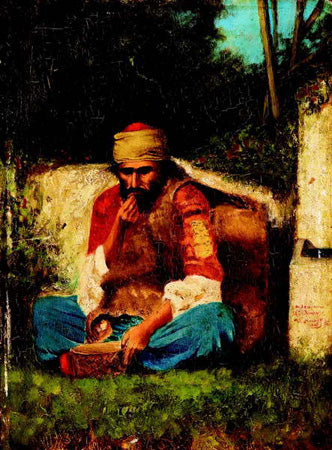
OSMAN HAMDI BEGGI
Lot 183
CATALOGUE NOTES
Signed, dated 1867. Next to the signature is Osman Hamdi's dedication in French "A son ami Rim.." Oil on solid mahogany wood.
Size: 40 x 31cm.
Price: 275,000 TL / $17,974,000.00
Portakal Art and Culture House 2002 Winter Auction took place on 22 December 2002 at Auction Cat. No: 246/A.
Osman Hamdi turns the East that the Westerner wants to see upside down. This small-scale masterpiece from 1867 not only points to the choice of subject at the moment of birth of figure application in Turkish painting, but also reveals the talented brush strokes of a master in his early youth. This figure, who slowly eats the food he takes from his basket, really has a body arrangement suitable for the pose he assumes in his cross-legged position. The harmony between his torso, arms and legs, the shape his body takes while crossing his legs, and the contribution of light and shadow areas to this pose are remarkable. The figure, who takes this action in which a daily need is met in harmony with the light and texture of nature, is the product of an extraordinary observation. This is a painting that brings together all the features that can be fit into a tiny painting with delicate mastery, from his beard to his shadow appearing at the bottom of the wall, from the illuminated green area in the front section to the bluish black space extending to the back.
Prof. Dr. SEMRA GERMANER
Osman Hamdi Bey’s painting of a traveler sitting in a field, resting and eating the provisions in the basket in front of him is important as it is one of the rare works from the artist’s early years. The painting, one of the paintings he made while a student in Paris, was dated 1867 and dedicated to a friend. 1867 was the year Osman Hamdi became a professional. In the Fine Arts section of the 1867 Paris International Exhibition, which opened in Paris in the same year and was visited by Sultan Abdülaziz, three of Hamdi Bey’s works, “Gypsies’ Break”, “Zeybek in the Ambush” and “Death of Zeybek”, were exhibited. This plain painting, dominated by colors and in which the painter describes life in all its naturalness, also belongs to the same period.

HASAN SAİM SHOP IN THE MARKET
Lot 183-A
CATALOGUE NOTES
19th - 20th century Signed. Oil on canvas.
Size: 56 x 46 cm.
Price: 60,000 TL / $3,922,000.00
We are looking at probably the most orientalist painting by a Turkish artist. This painting, which shows a small entrance in a marketplace, where all kinds of provisions and objects are sold, and two figures standing in front of it, has all the features that a Western perspective would demand. It clearly and explicitly points to the lifestyle of the East, making people visible as another reality far beyond their daily realities. The man sitting on the counter, no matter how meaningless his movement is, is at the forefront as a character who completes and even establishes the picture. The man inside the shop, on the other hand, is in the comfort expected of a typical Eastern merchant. Still, it should not be forgotten that in Turkish painting, which has only recently been dealing with the problem of figures, there are two human bodies depicted in a reality rarely seen in the world. Both carry the subject as the central elements of the composition in which they are placed with correct proportions, and give meaning to the picture we are watching.

HOCA ALI RIZA FIGURED LANDSCAPE
Lot 184
Signed in Old Turkish. Oil on canvas. Very little restoration.
Size: 65 x 81 cm.
Price: 300,000 TL / $19,600,000.00
CATALOGUE NOTES
Hoca Ali Rıza, who was educated first at Kuleli Military High School and then at the Harbiye, where he took painting lessons first from Nuri Paşa and then from Süleyman Seyyid, who had just returned from Paris, was a talented painter, and this was felt during his student years. In 1881, Hoca Ali Rıza was awarded the Nişan-ı Mecidiye by Sultan II. Abdülhamid for his achievements in the Harbiye painting class, and in 1883 he became an art teacher at the Harbiye. Hoca Ali Rıza's importance in the history of Turkish painting lies in the fact that he was the artist who initiated open-air painting and the poşad tradition in Türkiye. In the courses he gave at various institutions, including Darüşşafaka and İnas Sanayi-i Nefise Mektebi, Hoca Ali Rıza always directed his students to work from nature. The artist influenced his successors with the contribution of the lithographic albums he prepared and created a school known by his name. It is known that he initially painted landscapes by working from imagination or postcards and discovered Impressionism on his own. This painting by Hoca Ali Rıza is a masterpiece that he created by sensing a real place and reflects all the characteristic features of his art.
HOCA ALI RIZA
He started his education at Üsküdar Rüştiyesi and continued at Kuleli Military High School in 1879-1880 and then at Mekteb-i Harbiye-i Şahane. His application to Edhem Pasha, the chief of general staff at the time, to open a workshop at the school was accepted and Osman Nuri Pasha was appointed as the head of the workshop. Nuri Pasha, who is generally known for his landscapes with sea themes, was known for his educational personality that made people love art rather than the richness of the plastic values in his works. He took lessons from Hoca Ali Rıza, Osman Nuri Pasha, Süleyman Seyyid Bey and Monsieur Kess. During this period, he especially advanced his knowledge of drawing. In addition, he also learned the secrets of being a good art educator. In Yıldız Porcelain Factory, which was established in 1894, Fausto Zonaro and many local and foreign artists of the period, as well as Ali Rıza Bey's porcelain designs, took place. He was the president of the Ottoman Painters Association, which was established after the Second Constitutional Era. He retired from teaching in 1910. However, he continued to teach in secondary schools and Darüşşafaka. The painter known by the nickname Üsküdarlı identified with this region of Istanbul throughout his life. He was one of the first painters to bring the true taste of nature to Turkish painting. Landscapes are a constant subject and have a significant place in his paintings. Trees casting their shadows on cliffs, old streets with wooden houses, country cafes buried in the languor of the summer heat, and the deserted view of the coasts were subjects that Hoca Ali Rıza was passionate about.
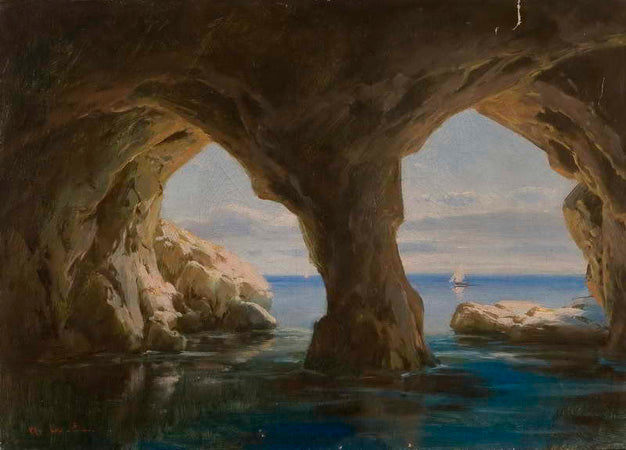
HOCA ALI RIZA CAVE AND SEA
Lot 185
Signed in Old Turkish, dated h.1340 (1921). Oil on canvas.
Size: 33 x 46 cm.
Price: 60,000 TL / $3,922,000.00
CATALOGUE NOTES
Why would a painter take shelter inside a cave that no one has probably visited? Why would he attempt to reverse the view and paint a surface we have not seen? It is really difficult to find answers to these questions. It is almost impossible to interpret this composition of Hoca Ali Rıza, in which he painted a double-mouthed cave from the inside, in a way that a unique sea can be seen. This composition, a similar one of which we will witness in the same artist, is truly devoid of describable data. Trying to interpret the double-mouthed cave as a symbolic element is a futile effort, because it is meaningless to put forward any other analysis since the painter who tackled this subject was a pure nature lover. On the other hand, this composition, in which only rocks and water are depicted, is equipped with pictorial tastes. The sailboat appearing on the horizon of this interesting composition, where steep and sharp corners melt and disappear, and shadows shine brightly with the reflection of the sea, points to a sign of life far away. The painter creates an imaginary reality in this place that smells of solitude and the sea, where he escapes and takes refuge in his dreams.
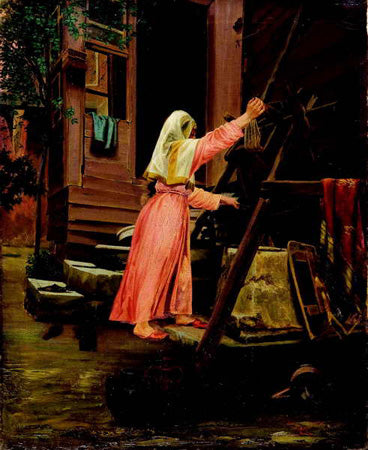
SULEYMAN SEYYID Woman drawing water from the well
Lot 186
Signed in Old Turkish, dated h.1299 (1881). Oil on canvas. Very little restoration has been done.
Size: 47.5 x 39 cm.
Price: 300,000 TL / $19,600,000.00
CATALOGUE NOTES
It was included in the “From the Ottoman Palace Collection” exhibition organized by the TBMM National Palaces Department and the Presidency of Culture and Heritage in Abu Dhabi, Al-Nakhael Hall between November 1 and November 14, 2006. (Exhibition catalogue, p.168)
This small figure composition from 1881 is important in terms of pointing to the diversity of subject selection in the early stages of body use in Turkish painting. This action, performed by a housewife drawing water from a well in an inner courtyard with a body movement appropriate to the work she is doing, sheds light not only on a woman but also on the background of domestic life in the late Ottoman period. The transparent dark pink texture running through the surface of the woman's clothing fills the entire composition like a signature, as Süleyman Seyyid's typical and characteristic color. The painting, which also reveals the arrangement of the backyard of the house, is loaded with traces of how well the artist observed and made visible a scene of daily life, from the water jug to his clogs, from the stone covering the well to the wooden cladding of the house. Süleyman Seyyid perhaps puts his signature under the first of the few applications in Turkish painting of the genre scene that began in Western painting in the 15th century.
SULEYMAN SEYYID
He completed his primary and secondary education at Maltepe and Maçka Military Junior High Schools. During his studies at the Idadi and Harbiye schools, he drew historical pencil and watercolor paintings, which attracted the attention of his teachers Chirans and Kees. He was sent to the Mekteb-i Osmaniye in Paris by Sultan Abdülaziz. There, he developed his artistic knowledge with the education he received in the subjects of “menazır”, “resm-i calligraphy”, “resm-i talidi” and “resm-i mücessem”. When the Mekteb-i Osmani was closed, he worked for a while with Cabnel, one of the famous teachers of that period. He graduated from the Paris School of Fine Arts. He returned to Istanbul in 1875.
He worked as an assistant to the painter Osman Nuri Pasha for a while. Later, he became an art teacher at the Harbiye. He continued teaching at the Kuleli Military High School and the Military Medical School. He contributed to the establishment of the “Mülkiye-i Şahane”. Süleyman Seyyid mostly chose still lifes, especially oranges, as the subject of his paintings.
Süleyman Seyyid, who was nicknamed “metrologiste” because he paid great attention to the rules of perspective, wrote a book called “Fenn-i Meazır” which he could not publish. Süleyman Seyyid, as an early impressionist in Turkish painting, influenced the generations that came after him and succeeded in overcoming the strict formalism of the classical painting tradition.
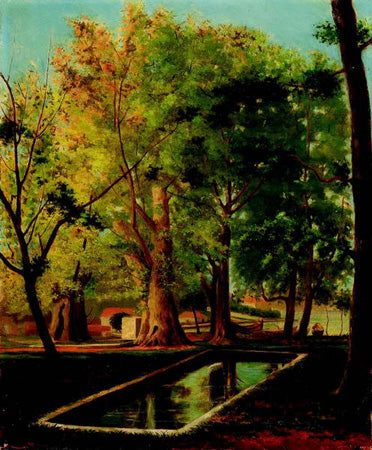
SULEYMAN SEYYID GARDEN WITH POOL
Lot 187
Size: 47 x 38cm.
Price: 90,000 TL / $5,882,000.00
CATALOGUE NOTES
Signed in Old Turkish, dated h.1310 (1892). Oil on canvas. Very little restoration has been done.
A pool placed as an irregular form under a cluster of trees where the leaves reach up to the sky and almost cover the sun... In this unique painting dominated by green, Süleyman Seyyid, on the one hand, makes visible his talent for perspective order and on the other hand, the dazzling magic of an optical illusion. The sparkling play between the tree trunks and branches reflected in the water and the greenish blue of the water emerges as if filtered by the painter's skillful brush. The atmosphere created by the light that circulates around as a divine light gives birth to a composition that we cannot get enough of. Stuck between the pleasure of seeing and the excitement of painting, the painter transforms the small grove he sees into an open-air place of worship, which he adorns with all the sublimity of light and color.
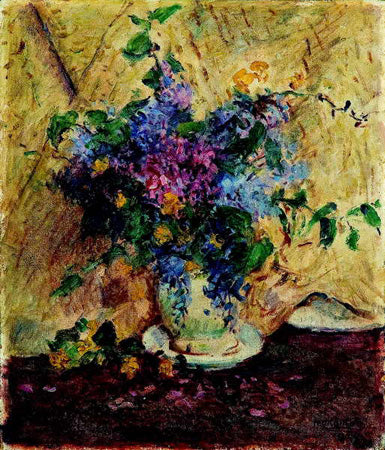
FEYHAMAN DURAN FLORAL STILL LIFE
Lot 188
CATALOGUE NOTES
Signed, dated 1959. Oil on hardboard.
Size: 54 x 46 cm.
Price: 50,000 TL / $3,268,000.00
Old Kemal Erhan Collection.
A bouquet of flowers that resists death, where hyacinths are overflowing and chrysanthemums are bursting with vital freshness. This time, the unique interpreter of the 1914 Generation in portraiture focuses on the details of the plant world in a painting dated 1959. These flowers, whose petals bend against a yellow fabric background, have begun to lose their vital freshness. Time is preparing an end for them that they cannot return. This fact, which the painter probably observes with admiration, is the strongest aspect of this type of painting that we call still life, emphasizing our mortality in the world. The artist discovers this moment of happiness and surprise he experienced once again in this simple composition where all the pictorial pieces are skillfully connected to each other.
FEYHAMAN DURAN
He entered Galatasaray upon his mother's request. He studied under the protection of one of the school's teachers, Abdurrahman Şeref Bey. His interest and talent in painting began at this school. After graduating from Galatasaray, he became a calligraphy teacher at the same school. He became a member of the Ottoman Painters' Society. Şevket Dağ found his portrait works successful and suggested to the school's director, Tevfik Fikret, that he be sent to Paris. The artist went to Paris for another reason: the portrait Abbas Halim Pasha made for his daughter.
In 1910 he went to Paris and took lessons from Julian Paul Laurens and Cormon. When he returned home
He taught at Sanay-i Nefise until 1951. Known for his intérieur, portraits and still lifes, the artist's paintings feature a flexible narrative consisting of free color keys. Although portraiture is a type of painting that is not quite compatible with impressionism, he applied the principles of this movement to a certain extent through the use of light and shadow. He combined a solid understanding of drawing with transparent colors. In addition to his portraits, Feyhaman Duran also painted landscapes, which were generally dominated by a realistic understanding.
A series of landscape paintings he made for the Topkapi Palace Museum between 1944 and 1947,
With their workmanship and realistic approach, they also have the feature of a document. Again, in his interiors from Topkapi Palace, he successfully transferred the changing appearances of the space under light onto his canvases. In his still lifes, while he initially worked with a strict formalism, he later reflected his impressions of nature with wide color spots.
Duran, who was closer to post-impressionists such as Gauguin and Van Gogh, occasionally created figurative compositions based on traditional miniature art.
He participated in Galatasaray exhibitions. He won an award for his portrait of Akil Muhtar, known as his first successful portrait. He took part in mixed exhibitions of the Turkish Painters Association. He made paintings from Gaziantep as part of the government-organized country tour program in 1938. He regularly participated in state exhibitions. Feyhaman Duran spent the winter months working in his garden house in a narrow street in Süleymaniye and the summers in his mansion in Çengelköy. He had no other passion than painting. Shortly after his death on May 8, 1970, a comprehensive exhibition of his was opened in the Academy Halls.
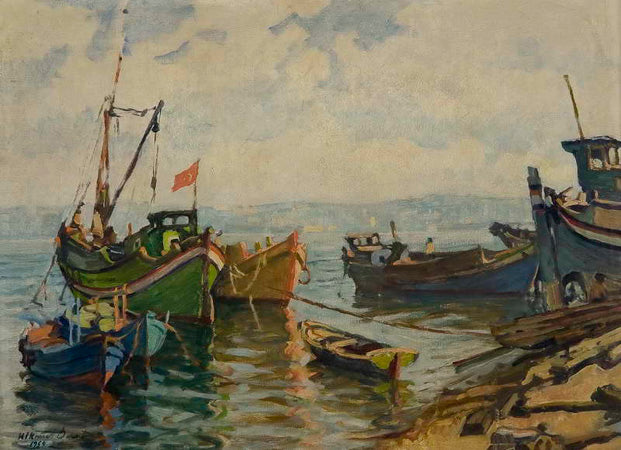
HIKMET ONAT BOATS ON THE USKUDAR COAST
Lot 189
Signed, dated 1959. The carcass is inscribed with "Boats on the Üsküdar coast 21 June 1959". Oil on canvas.
Size: 54 x 72 cm.
Price: 100,000 TL / $6,536,000.00
CATALOGUE NOTES
Like many painters of his generation, Hikmet Onat set out in the dark of the morning and painted the subjects he had chosen to target that day, together with different angles of the sun. From the sketchbooks he left behind, we see that the artist had made small notes on his drafts for the main painting he would soon finish.
Rather than an act of painting that is implemented with instantaneous decisions, it shows the importance the artist gives to an academic background. Indeed, the solid composition and color plans in this painting show that Onat combines the possibilities of an impressionist observation with the composure of studio painting.
In this solemn composition, where everything is positioned in its proper place, a mathematical order and a rational scheme stand out. Colors reflect resolutely on the surface of the sea, forms meet each other in balance. The artist not only presents a section from nature, but also creates a mathematical composition that can be discovered by those who can feel the subtle arithmetic of painting.
HIKMET ONAT
Born in Istanbul, Hikmet Onat graduated from the Academy of Fine Arts in 1910. He went to Paris the same year and worked in the studio of Fernand Cormon at the School of Fine Arts. He returned to his homeland in 1914 and participated in the traditional Galatasaray exhibitions. He taught there for a long time upon the suggestion of the Academy Director Halil Edhem.
He opened his first personal exhibition in Ankara in 1976. The artist, who was an open-air painter, frequently used sea themes in his paintings. He skillfully transferred boats, barges and their reflections on the water to his canvases in the landscapes of Kandilli Ridge, Çengelköy Hills, Rumelihisarı, Sarıyer, Üsküdar and Bebek.
Like Nazmi Ziya, he was one of the first Turkish painters to sincerely feel the touch technique consisting of small vivid color values and the effect of light on forms and colors.
Working as a nature painter was the main passion of Onat's artistic life. His works are in the Istanbul and Ankara State Painting and Sculpture Museums and private collections.
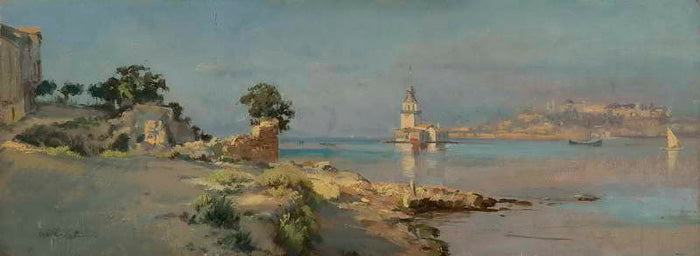
FROM HOCA ALI RIZA SALACAK
Lot 190
Signed in Old Turkish, dated h.1338 (1919). Oil on canvas. Pasted on cardboard.
Size: 21.5 x 57 cm.
Price: 50,000 TL / $3,268,000.00
CATALOGUE NOTES
Old Kemal Erhan Collection.
The Maiden's Tower, placed within a horizontal panorama that flows horizontally, is a delicate brush stroke that presents the historical peninsula in an uncertain texture... We are looking at a small but magnificent masterpiece of an urban traveler painter who has walked every inch of Istanbul's neighborhood, recording the finest details of daily life like a chronicler. This landscape, starting from the left section and gradually extending to the depth on the right as if giving a composition lesson, is a rare work that shows how a painter who has dedicated himself to the stones and soil of Istanbul uses the color that suits this city the most, namely blue, like a virtuoso. The harmony between the grace with which the brownish yellow tone that roams the surface of the soil flows to the rocky coastline extending to the shore and the competence with which the Maiden's Tower is adorned with white light, revealing all the beauty of the summer season, is truly worth applauding.
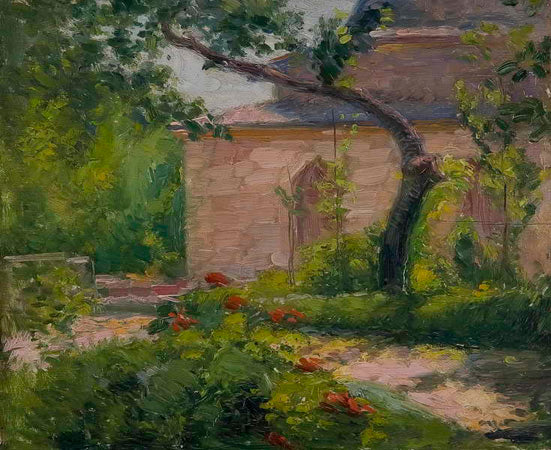
NAZMI ZIYA MADRASA AND ITS GARDEN
Lot 191
Oil painting on plywood.
Size: 33.5 x 41 cm.
Price: 150,000 TL / $9,800,000.00
CATALOGUE NOTES
Old Kemal Erhan Collection.
The colors gracefully processed on the surface of the painting, a painting like an emerald where the light licks a section of nature with atmospheric games. The strongest painter who established an inner connection with the blessings of nature among the 1914 Generation, also known as the Çallı Generation, is probably Nazmi Ziya. Unlike his colleagues who applied the rules they learned in Paris like a professional show, he does not see painting as an assignment to be completed. In each of his paintings, he desires to touch the brush to the surface, to let the color flow like a spring pregnant with games of light, to let the shadows moan like notes. We are faced with a truly jewel-like painting by one of the rare painters who makes love with his painting, who brings his thought and action together at a perfect moment on the surface under his hand.
NAZMI ZIA
Nazmi Ziya took his first private lesson from Hoca Ali Rıza. Nazmi Ziya, who entered the Fine Arts School in 1902, took lessons from Valery, Warnia and Oskan Efendi. After graduating, he went to France. He continued to work in the studio taught by Marcel Bachet and Royer at the Academia Julien for a while. He worked at the Cormon Studio in Paris between 1908 and 1918. During this period of great turmoil in painting in Paris, the artist remained loyal to the previous movement, or more clearly, impressionism. He became one of the most important representatives of this school in Türkiye with the paintings he made in Istanbul, both in Paris and upon his return to the country. Nazmi Ziya adopted the adventure and all the discourses of the French Impressionists, a generation that brought charm and mystery to the last quarter of the 19th century, and made it the purpose and meaning of life. He wanted to approach nature like the Impressionists by adopting a lifestyle specific to them. But he also believed in the necessity of being an investigator. Sometimes everything, the sea, mountains, clouds, earth, that is, blue, purple, green, yellow, were shown as melting and disappearing under the burning sun, while in some of his small-scale works everything was revealed in its true color. In addition to his great inclination towards the landscape genre, Nazmi Ziya also tried to make themed arrangements and gave importance to making them more easily understandable to the public.
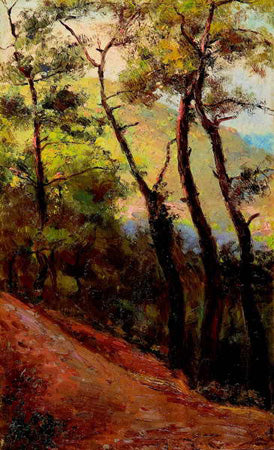
NAZMI ZIYA Pines from the Island
Lot 192
CATALOGUE NOTES
Oil painting on wood. It has very little restoration.
Size: 51 x 31cm.
Price: 90,000 TL / $5,882,000.00
Old Suat Hayri Ürgüplü Collection.
We are looking at a poetic landscape by Nazmi Ziya, one of the most competent practitioners of an impressionist light and color palette in this geography, who makes us do somersaults in texture, texture, and the beauties that a brush can leave behind. This is a magnificent painting that reflects the unique pleasure a painter experiences when choosing and applying color in all its glory. In this painting, where nature is blessed, trees are transformed into dazzling forms with their trunks, and the light spreading to every square centimeter of the surface literally shines with joy, the artist presents all the beauties we seek in an impressionist painting in a richness that will delight our eyes.
SUAT HAYRI URGUPLU (1903 - 1981)
He was born in Damascus on August 13, 1903. He is the son of Şeyhülislam Ürgüplü Hayri Efendi, who issued the fatwa to join World War I. He is a descendant of Nevşehirli Damat İbrahim Paşa, the grand vizier of the Tulip Era. After Galatasaray High School, he graduated from Istanbul University Faculty of Law in 1926. He held various state offices. He worked in the courts of the 1924 Population Exchange between Turkey and Greece. He served as a judge in the Istanbul Commercial Court (1929-1932). He was elected as a Member of Parliament for Kayseri in 1939 and 1943. He became the Minister of Customs and Monopoly in the 2nd Şükrü Saraçoğlu cabinet. He served as a Member of Parliament for Kayseri from the Democrat Party until 1952. He served in the European Consultative Assembly
He served as vice president. In 1952, he left the parliament and was appointed to the Bonn Ambassadorship. He was appointed to the London Ambassadorship in 1955, to Washington in 1959, and to Madrid in 1960. He participated in the 1961 elections and was elected as the Justice Party's Kayseri Senator. He became the first president of the Senate of the Republic. After completing this duty, he served as the president of the coalition government led by the Justice Party in 1965 (from February 5, when İsmet İnönü resigned from the prime ministry, until the general elections of October 10, 1965). He was elected as a quota senator in 1966. He remained in this position until 1972. He died in 1981.
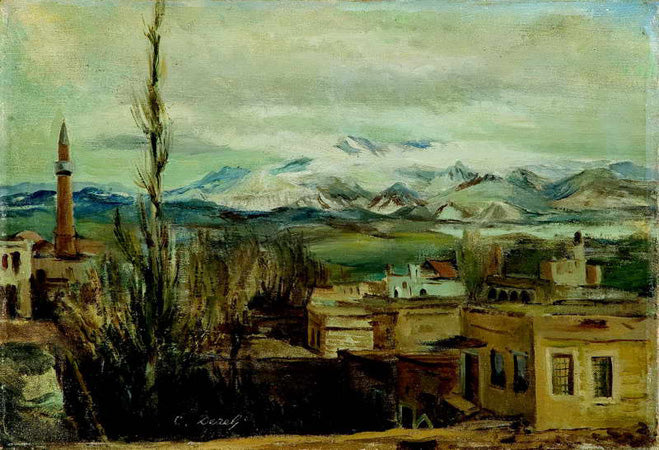
CEVAT DERELİ LANDSCAPE FROM ANATOLIA
Lot 193
Signed, dated 1948. Signature engraved. Oil on canvas. Mounted on cardboard.
Size: 31.5 x 46 cm.
Price: 22,000 TL / $1,438,000.00
CATALOGUE NOTES
Old Suat Hayri Ürgüplü Collection.
In 1938, Cevat Dereli went to Sinop in 1939 and to Gümüşhane in 1942 on the occasion of the National Tours organized by the Republican People's Party. The main theme of the early paintings of this painter, who was a founding member of the Independent Painters and Sculptors Society, was determined by these two journeys. In his own words, Dereli understood the scent permeating the wind and nature of Anatolia and the soil cover that appeared in each region with a different taste after this experience. Looking at the arrangement of the flat-roofed houses in this landscape dated 1943, we can say that the painting is about a village in Gümüşhane rather than Sinop.
CEVAT DERELI
He studied at the middle school and high school. In 1915, with the guidance of Nazmi Ziya, he enrolled in the Sanayi-i Nefise and became a student of Hikmet Onat and İbrahim Çallı. During his student years, he participated in the group exhibitions of the Ottoman Painters Society. In 1922-1923, he founded the New Painting Society with his friends. In 1923, he passed the exam held by the Ministry of Education and went to Paris with a scholarship. He worked in the Paul-Albert Laurens studio in Julian until 1928.
He worked as an assistant teacher in the Nazmi Ziya studio at the Academy of Fine Arts. He continued this duty for four years. He then worked as a designer at the Faculty of Medicine for 7 years. He drew anatomical plans for the faculty. During this period, he also worked at the Museum of Painting and Sculpture. When Leopold Lévy was appointed head of the painting department at the Academy, he returned to his old institution. When Çallı retired in 1947, he became a studio instructor instead. He participated in the Venice Biennale in 1956 with a similar painting to the one he made in 1954 titled “Production”.
He contributed paintings to contemporary Turkish art exhibitions held abroad. An international committee that gathered to select the paintings to be included in the 50-year modern art exhibition held in Brussels in 1958 found Cevat Dereli's paintings worthy of being exhibited among the works sent from Türkiye. During this period, positive impressions about the artist began to appear in the foreign press. In the early days, he worked realistically with an impressionist spirit and produced many still lifes and landscapes in this field.
He made a series of paintings about Istanbul nature, the life of fishermen, and the "yellozlar" of Bağdat Street. In 1981, he won one of the state awards at the exhibition organized by the Ministry of Culture for the 100th birth anniversary of Atatürk. His paintings are in the Istanbul and Ankara State Painting and Sculpture Museums, as well as in private collections in Turkey and abroad.

SEREF AKDIK LANDSCAPE
Lot 194
CATALOGUE NOTES
Signed. Oil on cardboard.
Size: 39.5 x 30 cm.
Price: 6,000 TL / $392,200.00
Old Suat Hayri Ürgüplü Collection.
Although there is no definite influence of any artistic style in his works, Şeref Akdik’s understanding of painting, as stated by painter-writer Eşref Üren, bears parallels with “Edgar Degas’ impressionism based on solid drawing”. Nature, objects and living beings owe their appearances to the vivid and realistic presentation of a pictorial narrative in his works. Just like in this composition, Akdik transfers a pictorial landscape he has captured onto the canvas surface with all his energy. He has no major aesthetic concerns, and does not invent unnecessary covers for what he sees. He constructs compositions that invite his audience in with an extremely sincere approach. The house that is vaguely visible in the background of the painting, the fence and iron gate that border the garden, and the colorful vegetation that roams the ground floor of the trees in front add a mysterious excitement to the painting that we can enjoy anew each time.
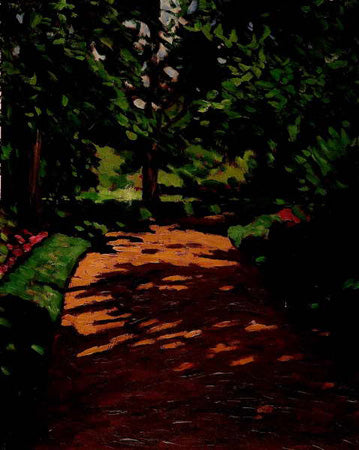
BLESSING AYETULLAH TREE-LINED ROAD
Lot 195
CATALOGUE NOTES
Signed. Oil on plywood.
Size: 41 x 33 cm.
Price: 3,000 TL / $196,000.00
Old Suat Hayri Ürgüplü Collection.
A dirt road illuminated by impressionistic light effects, competing color touches in the shadows, a symbolic lifeline that extends to an unknown destination... In one of her rare paintings, Nimet Ayetullah weaves a small piece of nature with a lyrical atmosphere. The delicate harmony between the brown of the soil and the green of the trees reminds us of a dream garden where one longs to be, free from all details.

AVNI ARBAS PORT
Lot 196
Signed, dated 1946. The signature was engraved. Oil on plywood.
Size: 36 x 46cm.
Price: 13,000 TL / $849,700.00
CATALOGUE NOTES
A 1946 harbor painting that suddenly appeared among the branches of the “Harbor” exhibition held by the Yeniler Group in 1941. Avni Arbaş looks at Istanbul, which he would wrap in a misty atmosphere in the coming years, from a closer perspective, from a dock where boats and people are swaying. His palette, which would turn into dark tones in the 1950s, has not yet darkened.
This painting is neither impressionist nor does it bear traces of the cubic constructivist tendencies of the Fine Arts Academy under the control of its teachers. An extremely original and comfortable understanding of composition and color roams the depths of the painting. A small crowd is moving in the front, while boats with colorful bodies in the back offer a visual feast. With every moment and every brushstroke, this painting smells of the sea, blue and sparkle of Istanbul. It also represents the self-confidence of a young painter.
AVNI ARBAS
He was born in Istanbul in 1919. His father was a cavalry colonel from the Kuvayi Milliye officers, Mehmet Nuri Bey. This enlightened officer, who also painted and found a French teacher in Anatolia for his seven-year-old son, was Avni's first teacher who instilled art in him (in his own words).
After Mehmet Nuri Bey's death in 1929, Avni came to Istanbul with his mother Rana Hanım. Here, he enrolled in Galatasaray High School without boarding.
In this school, he finds an environment that will allow the seed of painting within him to grow and develop.
In the painting workshop directed by his teacher, Mehmet Ali Bey, one of the military painters, important Turkish painters of the future such as Cihat Burak and Selim Turan worked together.
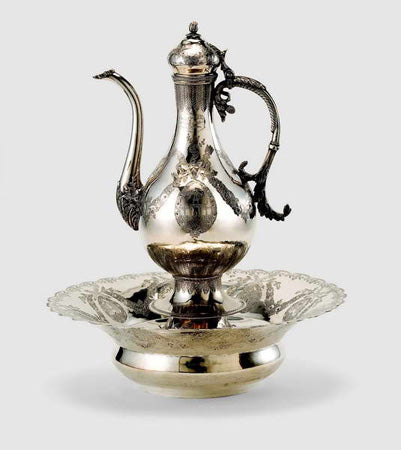
Silver Basin with Tughra - Pitcher
Lot 197
CATALOGUE NOTES
Belonged to Behice Sultan (1848 - 1876), daughter of Sultan Abdulmecid. With the tughra of Sultan Abdulmecid (1839 - 1861).
Size: Weight: 3.715 gr. Height: 50 cm.
Diameter: 37.5 cm
Price: 175,000 TL / $11,438,000.00
All pieces are inscribed in old Turkish “İsmetlu Behice sultan Aleyhişşan Hazretleri 1277 (1860)”. The basin has a flat bottom, a wide body, a high and wide rim. The pedestal-footed ewer has a swollen body, a long neck, and a domed lid. It has a handle and a spout. The handle is in the form of a branch, the lid handle is in the form of a bud. The soap dish is openwork. All pieces are embroidered with garland motifs and medallions made of roses using the engraving technique. There are architectural motifs inside the medallions, and crossed torches and arrow holsters on the upper parts. The segmented border of the basin is decorated with stylized branch and flower motifs.
It was included in the "Ottoman Art Works" exhibition organized by the Portakal Art and Culture House between 8 November and 8 December 2001.
BEHICE SULTAN
She is the daughter of Sultan Abdülmecid (1839-1861) from his third successor Nesrin Hanım. She was born on August 6, 1848 in Çırağan Palace. She lost her mother at the age of five. She is the oldest daughter of Abdülmecid to marry. Although her dowry was prepared very early, she was married off only at the age of twenty-eight due to tuberculosis. She eventually fell in love with Hamid Pasha, the grandson of Halil Hamid Pasha and one of the well-dressed and educated young men of the time, and they got married in January 1876.
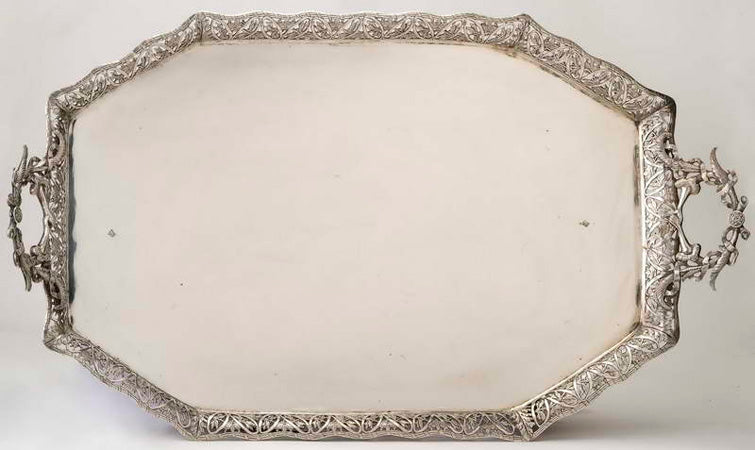
Silver Tray with Tughra
Lot 198
With the signature of Sultan Mahmud II (1808 - 1839). The flat-bottomed wide body is rectangular in shape. The handle is made of a branch and a hand figure. The sliced and openwork border is embroidered with stylized plane tree leaf motifs.
Size: Weight: 4.463 g. 81 x 45 cm.
Price: 40,000 TL / $2,614,000.00
CATALOGUE NOTES
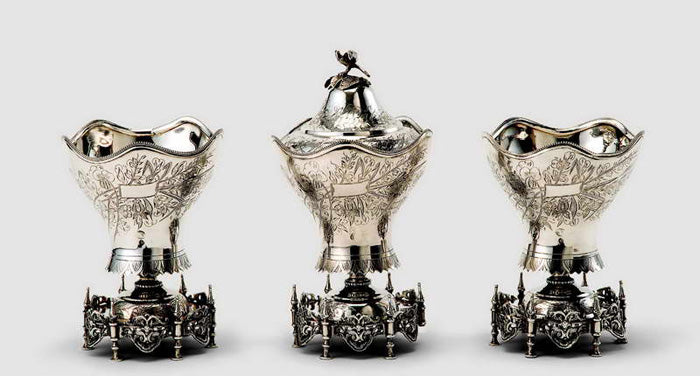
Silver Dessert Set with Tughra
Lot 199
With the signature of Sultan II. Abdulhamid (1876 - 1909). It consists of a lidded dessert bowl and 2 spoons. The wide mouth of the swollen body on a round base is segmented. The lid handle of the dessert bowl is in the form of a bird. Large branch, leaf and flower motifs are embroidered with the engraving technique. The openwork base is decorated with curved branch motifs.
Dimensions: Weight: 1.198 g.
Price: 9,000 TL / $588,200.00
CATALOGUE NOTES
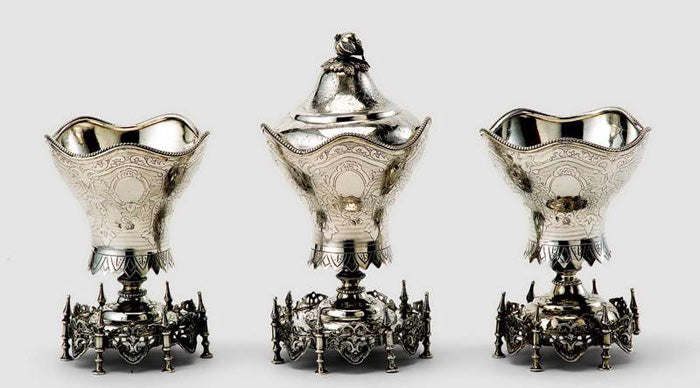
Silver Dessert Set with Tughra
Lot 200
With the signature of Sultan II. Abdulhamid (1876 - 1909). It consists of a lidded dessert bowl and 2 spoons. The wide mouth of the swollen body on a round base is segmented. The lid handle of the dessert bowl is in the form of a pomegranate. Large branch, leaf and flower motifs are embroidered with the engraving technique. The openwork base is decorated with curved branch motifs.
Dimensions: Weight: 1.188g.
Price: 9,000 TL / $588,200.00
CATALOGUE NOTES
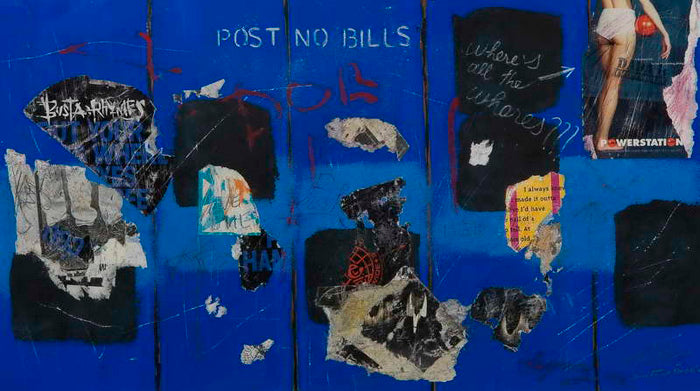
BURHAN DOGANCAY WALL
Lot 201
Signed, dated 1998. Mixed media on paper.
Size: 37 x 65.5 cm.
Price: 8,000 TL / $522,900.00
CATALOGUE NOTES
Burhan Doğançay is an artist who interprets the visual alphabet carved on city walls as the frescoes of modern times. The artist deciphers the visual codes of the walls that keep a city on its feet and that create boundaries for all cultural and political relations. He follows the traces left by humanity from the first paintings in which he drew the image of the primitive caveman's hand to the present day. The interest that draws him to the surface of the walls must be the hidden symmetry of all kinds of posters and slogans. Advertisements of advertising companies, love lyrics written in a jiffy, illegally pasted political advertisements, slogans that the government obscures in order to censor... frankly, all the visual and verbal relations that keep a city on its feet do not escape his careful eyes. The wall, as a medium of communication, forms the backbone of Doğançay's art.
BURHAN DOGANCAY
He was born in Istanbul in 1929. He began his art education by taking lessons from his father and Arif Kaptan. He studied law at Ankara University. He completed his doctorate in economics at the University of Paris in 1955. While continuing his academic education, he continued his painting studies, which he had started with his father's encouragement, without any interruption. He participated in art studies at La Grande Chaumiere during his student years in Paris. When he completed his doctorate and returned to Ankara, he opened joint exhibitions with his father at the Art Lovers Club. In 1961, five of his paintings were accepted to the 22nd State Painting and Sculpture Exhibition. He went to New York in 1962. In 1964, one of his works was purchased by Thomas Messer, the director of the Guggenheim Museum. He began his "Walls" series, which would begin with the walls of New York and become an important source of inspiration, in the same years. In 1975, he began the "World Walls" photography project, which would cover 114 countries. In 1962, the products of the project were exhibited for the first time under the name of “Whispering Walls” at Georges Pompidou in Paris. In 1983, the artist’s designs began to be woven as tapestries by France’s famous carpet center Aubusson. Nineteen large-scale photographs of the Brooklyn Bridge, which underwent major repairs in 1986, were exhibited for nearly two years at JFK International Airport during New York City’s 100th anniversary celebrations (1998).
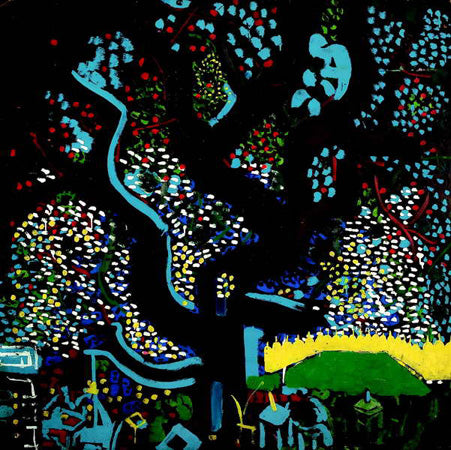
BEDRİ RAHMİ EYÜBOĞLU UNDER THE PLANE TREE / FIGURED COMPOSITION
Lot 202
CATALOGUE NOTES
Signed. The artist painted both sides of the hardboard. The signature is in the “Composition with Figures”. Oil on hardboard.
Size: 120 x 120 cm.
Price: 25,000 TL / $1,634,000.00
A large tree painting that will almost overshadow all of humanity with its trunk, from Bedri Rahmi, who is a fan of Anatolia’s embroidery tradition, the poetic order in its motifs, and the irony and sorrow in its oral literature. The artist, who brings together modern painting with local tastes and incorporates folkloric elements into his painting with a colorist and linear approach, presents one of the simplest yet most magnificent works of his art with the image of a large tree. Constructing the trunk and branches of the tree with uninterrupted lines like a calligraphy master, and weaving the color spots covering the entire surface like a web, Bedri Rahmi creates a vibrant and sparkling composition with everything.
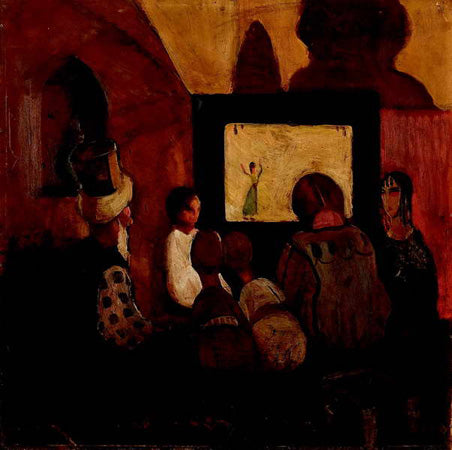
TURGUT ZAİM SHADOW PLAY
Lot 202-A
Size: 49 x 49 cm.
Price: 10,000 TL / $653,600.00
CATALOGUE NOTES
Signed. Dated 1930. Oil on cardboard.
Turgut Zaim is an artist from the enlightenment generation of the Republic. He is one of the most interesting painters of this first generation who thought and researched that in order to make a modern painting in this geography squeezed between the East and the West, it was necessary to synthesize local subjects with Western forms. Zaim discovered ways to present both an oral tradition and a cultural and historical accumulation with a new understanding in the rural areas of Central Anatolia. He sees the perspective order of miniature art as a source for the infrastructure of his early paintings. He revives the opera The Abduction from the Seraglio with tiny figures in typical Eastern clothes, and compares the side view of the Yoruk woman milking her goat to a miniature hero. He reflects every detail that permeates the daily life of Anatolia, a shadow play as in this painting, and the excitement experienced around it in his painting. He points to the social bond brought about by a cultural action that has been staged in these lands for centuries. He adds a grotesque air to the sharp shadows filtering through the light and shadow theatre, and transforms the heads of the young boys who stretch their necks to see the curtain into an abstract form that we can see in a modern painting. Turgut Zaim sanctifies the lost time and cultural heritage.
TURGUT ZAIM
After graduating from St. Joseph, he entered the Academy of Fine Arts. He worked in the studio of I. Çallı. He attended F. Duran's studio for a while. He settled in Ankara in the mid-1930s.
Turgut Zaim's paintings, with their new and comprehensive content and the related understanding of form, constituted a counter-option to the developments parallel to Western trends and tendencies in our recent art of painting. He brought folkloric elements to the forefront in his paintings and presented local concerns within a poetic frame of expression.
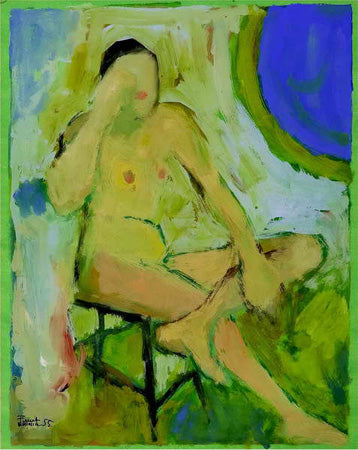
FİKRET MUALLA SITTING NAKED
Lot 203
CATALOGUE NOTES
Signed, dated 1955. Mixed media on paper.
Size: 37 x 29 cm.
Price: 25,000 TL / $1,634,000.00
Old Ferit Edgü Collection.
Portakal Art and Culture House “Fikret Mualla Painting Auction” took place on October 2, 1991 at Auction Floor No: 34.
Fikret Mualla thinks that all the living beings, objects and bodies that make up his world of appearances speak to him. Small details, expressions reflected from people's bodies, small groups coming together in bars, bistros and cafes, little girls he meets on the street... Mualla obviously has a familiarity with everything he encounters during his time. He is interested in all the beauties that permeate a living world. He wants to be close to everything, to taste everything as a painter. As a seeing eye, he pulls his subjects from his own life. Even if this naked figure is not really sitting in front of him, it suddenly appears by relating to a body he pulls from his memories. In a room crowned by a deep blue sky, only one nude attracts his attention. In that, Mualla experiences the pleasure of painting.
FİKRET MUALLA
After Saint Joseph and Galatasaray High School, he was sent to Switzerland to study engineering. Realizing that painting was more interesting than engineering, he studied poster and couture at the Munich Fine Arts Academy, and then painting at the Berlin Fine Arts Academy. He went to Paris and Southern France in the late 1930s, where he stayed until the end of his life. The artist, who was called the last “bôhème” in France and spent part of his life in mental hospitals, left behind numerous drawings, gouache, watercolors and a few oil paintings. After his death, some of his paintings were purchased by the state and a Fikret Muallâ Hall was created in the Ankara Painting and Sculpture Museum. With his tragic life and crises, he became the first Turkish artist to open the doors of our contemporary art to the Western world with the unique structure of painting and to make his name known in Western sources.
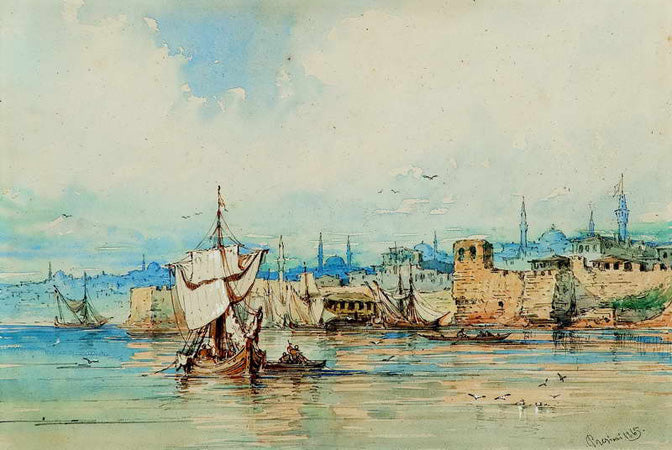
AMADEO PREZIOSI ISTANBUL
Lot 204
Signed, dated 1865. Watercolour on paper.
Size: 24 x 34 cm.
Price: 20,000 TL / $1,307,000.00
CATALOGUE NOTES
AMADEO PREZIOSI
Born in Valetta, Malta, Preziosi was a member of a noble family. He began his first painting studies in the studio of Guiseppe Hyzler, and later continued his education at the Paris Academy of Fine Arts. He settled in Istanbul in late 1842. He became famous by reflecting the contemporary life of the city in his paintings. He reflected the cultural diversity of the people of Istanbul in his paintings. In addition to Turks of various professions, he also depicted other ethnic groups of Ottoman society such as Greeks, Albanians, Armenians, Bulgarians and Jews. The appearances of Istanbul were subjects that interested Preziosi as much as the people. He would draw his paintings with pencil or ink and then color them with watercolors. The lithographs of his paintings were published in two albums, Stamboul Recollections of Eastern Life and Stamboul Souvenir d'Orient. He served as the court painter of Sultan Abdulhamid II. He exhibited his paintings in London, Paris and Istanbul. The works of the artist, who died in Istanbul, are located in the Istanbul Painting and Sculpture Museum, the Naval Museum, the Topkapi Palace Museum and private collections.

BARTOLINI OLD ISTANBUL STREET
Lot 205
CATALOGUE NOTES
Signed, dated 1892. Watercolour on paper.
Size: 54 x 36 cm.
Price: 12,000 TL / $784,300.00
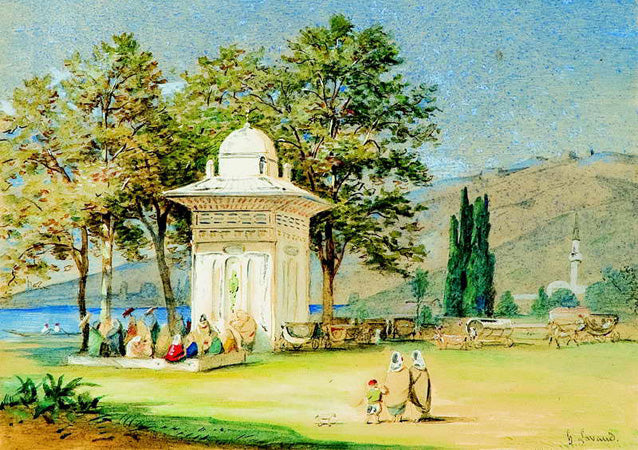
G. LAVAUD CHAT AT THE FOUNTAIN
Lot 206
Signed. Watercolour on paper. 19th century.
Size: 17 x 23 cm.
Price: 4,500 TL / $294,000.00
CATALOGUE NOTES
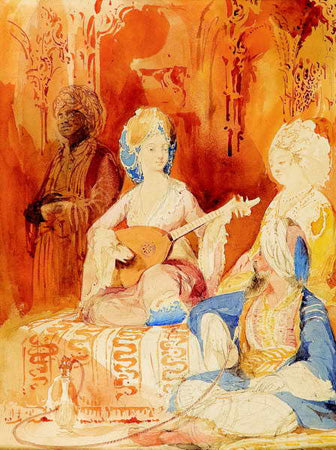
THOMAS ALLOM CIRCASSIAN PRISONERS
Lot 207
CATALOGUE NOTES
Watercolour on paper.
Size: 30 x 22 cm.
Price: 22,000 TL / $1,438,000.00
THOMAS ALLOM
Born in London, the artist received his higher education at the Royal Academy. His passion for sightseeing, traveling and painting what he saw with an architect's eye inevitably led him to documentary painting. He first traveled to his country of England, then to Scotland and then moved on to France and Belgium. He painted beautiful landscapes in these countries. His desire to travel and see took him further afield to China. After these travels, Allom stayed in his country of England for a while and then hit the road again to see Istanbul and the holy lands in the east, which he had long desired.
In the most productive years of his life, between 1834 and 1836, he traveled from Istanbul to Anatolia, Syria and Palestine and created various paintings. He painted Istanbul from Yeniköy to Yedikule.
With these works, he gained an important place among the orientalist painters of his time. During his time in Istanbul, he drew picturesque pictures in the squares and streets of this mysterious city, receiving important information about the city's historical structure under the guidance of Robert Walsh, a clergyman and researcher who worked at the British embassy in Istanbul.
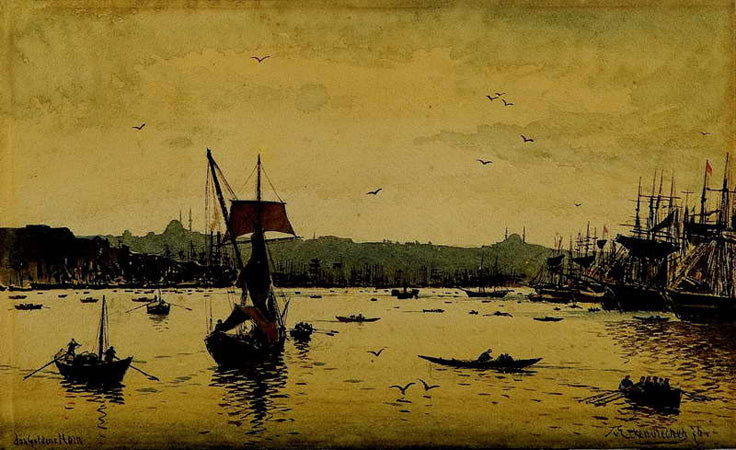
KARL - P. THEMISTOCLES VON ECKENBRECHER HORN
Lot 208
Signed, dated 1876. "Das Goldene Horn" written in the lower left corner of the painting. Watercolour on paper.
Size: 20 x 32 cm.
Price: 15,000 TL / $980,000.00
CATALOGUE NOTES
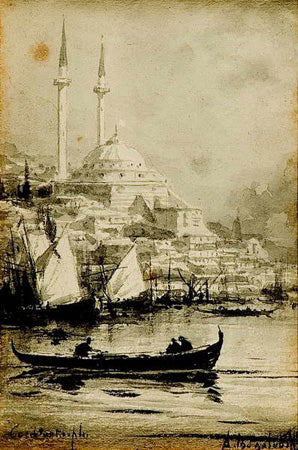
ALEXEY PETROVICH BOGOLYUBOV
Lot 209
CATALOGUE NOTES
Mixed media on 2 sheets of paper.
Size: 14 x 9 cm.
Price: 12,000 TL / $784,000.00
a. Signed Istanbul. “Constantinople” is written on the left side.
b. Signed Venice. "Venezih" is written on the left side.
ALEXEY PETROVICH BOGOLYUBOV
The artist of Russian origin was born in the city of Pomerania.
He became a student of Worobjeff and Willeward at the Saint Petersbourg Academy. Later, he worked in Calame's studio in Geneva and in Isabey's studio in Paris. He completed his education in Anderas Achenbach's studio in Düsseldorf. He went to Italy. He became a professor in 1861. The artist, who made paintings and engravings about the sea, frequently painted Venice, Istanbul and Amsterdam.
His works are exhibited in the Leningrad, Moscow and Paris Museums.
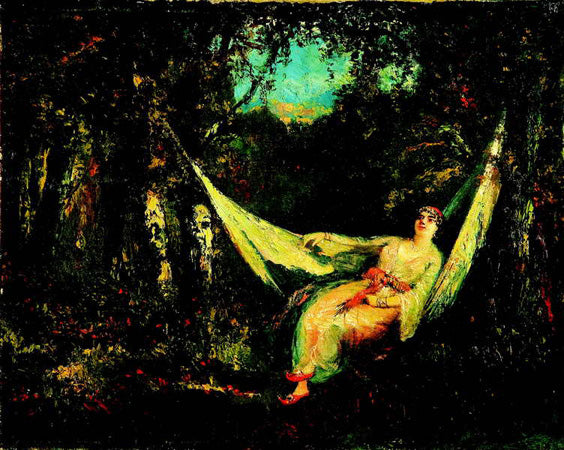
FRANÇOİS MAURY THE WOMAN IN THE HAMMOCK
Lot 210
Signed. Oil on canvas.
Size: 33 x 40.5 cm.
Price: 12,000 TL / $784,000.00
CATALOGUE NOTES
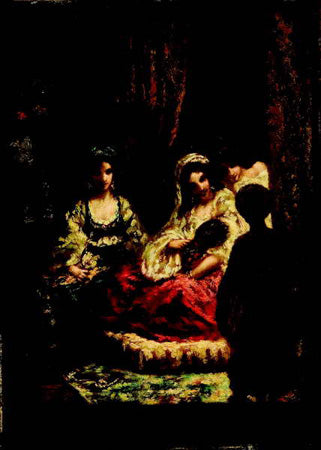
NARCISSE - VIRGIL DIAZ DE LA PENA ADORED WOMEN
Lot 211
CATALOGUE NOTES
Signed. Oil on wood.
Size: 44.5 x 32 cm.
Price: 28,000 TL / $1,830,000.00
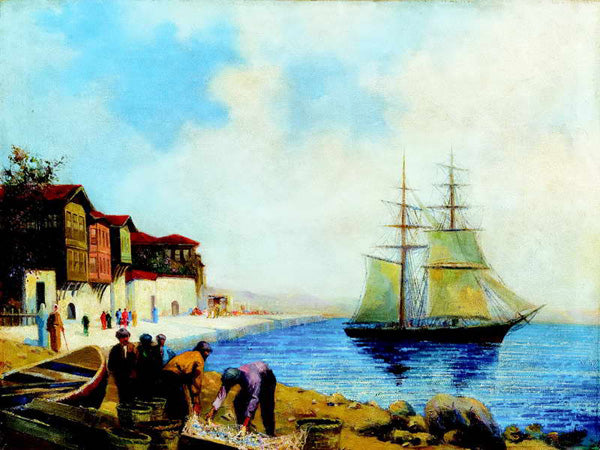
CARL CALUSD BEYKOZ
Lot 212
Signed. Oil on canvas.
Size: 69 x 92 cm.
Price: 10,000 TL / $653,600.00
CATALOGUE NOTES
CARL CALUSD
The American painter, famous for his sea paintings at night, lived in Istanbul for many years. He was educated at the empire's fine arts school. He took lessons from the painter Valeri, the pupil of the ruler.
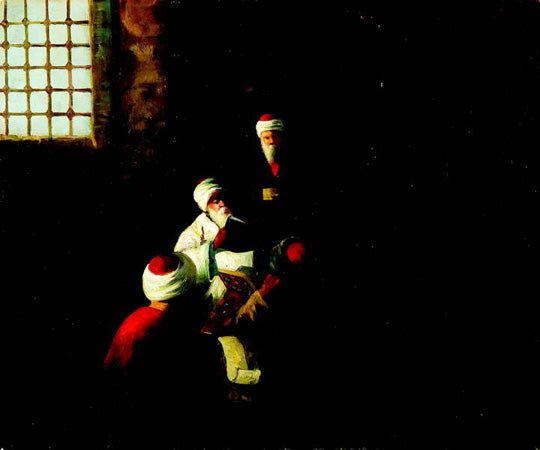
CARL CALUSD QURAN READING TEACHERS
Lot 213
Signed. Oil on canvas.
Size: 51 x 61cm.
Price: 12,000 TL / $784,000.00
CATALOGUE NOTES
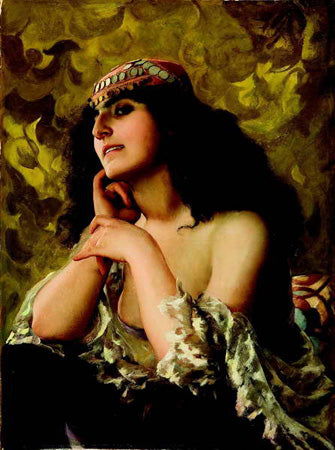
LUIS RICARDO FALERO YOUNG WOMAN PORTRAIT
Lot 214
CATALOGUE NOTES
Signed, dated 1876. Oil on canvas. Rentualized.
Size: 73 x 54 cm.
Price: 70,000 TL / $4,575,000.00
LUIS RICARDO FALERO
He was born in Granada, Spain. He received his education in Paris. He settled in London in 1880. He successfully used nude female figures in mythological and imaginary subjects. Some of his important works are "Night Fairy", "Dance of the Minstral" and "Zodiac".
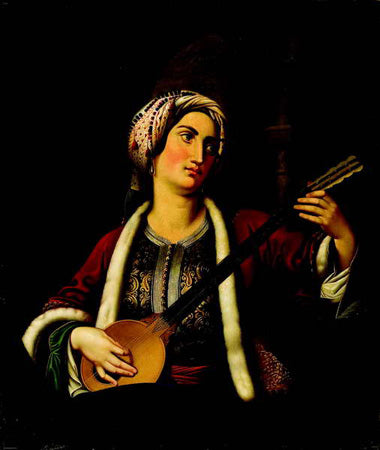
ANONYMOUS (ENGLISH SCHOOL)
Lot 215
CATALOGUE NOTES
Oil on canvas. 18th - 19th century.
Size: 98 x 83 cm.
Price: 60,000 TL / $3,922,000.00
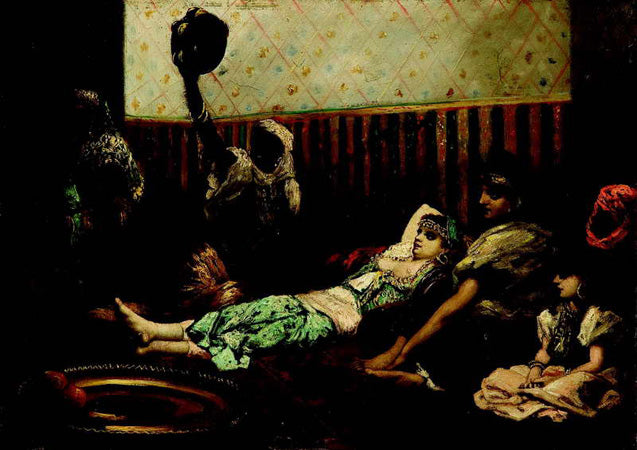
ANTON DIEFFENBACH FUN IN THE HAREM
Lot 216
Signed. Oil on canvas.
Size: 32.5 x 45.5 cm.
Price: 10,000 TL / $653,600.00
CATALOGUE NOTES
ANTON DIEFFENBACH
The German artist was born in Wiesbaden. He began his education by studying painting in Strasbourg. Then he went to Paris to learn sculpture in Pradier's studio. Not long after, he continued his painting education in Düsseldorf in Jordan's studio. He used family atmosphere and children's games as subjects in his paintings. His works are exhibited in Bremen and Strasbourg Museums.
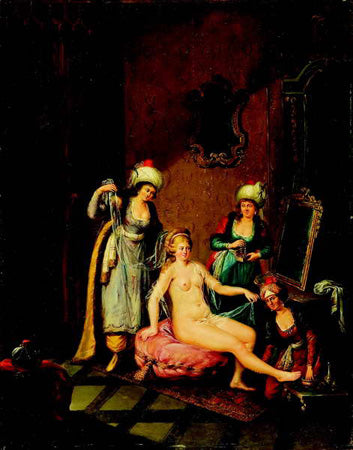
ANONYMOUS (FRENCH SCHOOL) ADORED LADY SULTAN
Lot 217
CATALOGUE NOTES
Oil on metal plate. Late 18th - early 19th century.
Size: 48 x 38.5 cm.
Price: 65,000 TL / $4,248,500.00
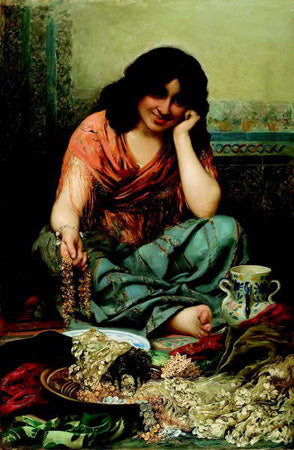
EDOUARD - BERNARD DEBAT - PONSAN CROSSED SELLER GIRL
Lot 218
CATALOGUE NOTES
Signed, dated 1882. Oil on canvas. Rentualized.
Size: 112.5 x 74 cm.
Price: 65,000 TL / $4,248,500.00
EDOUARD-BERNARD DEBAT-PONSAN
He was born in Toulouse, France. He was a student of Cabanel at the Academy of Fine Arts. He was the president of the French artists' association. He was awarded the "Legion D'Honneur". His works are exhibited in the museums of Carcassonne, Clermont-Ferrand, Nantes, Rouen and Toulouse.
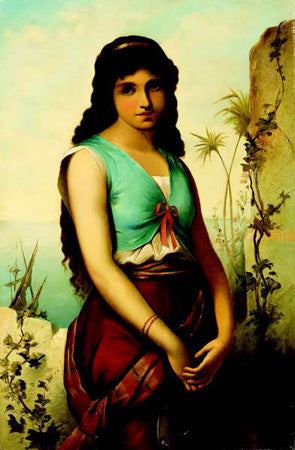
ACHILLE JACQUES - JEAN - MARIE DEVERIA YOUNG GIRL PORTRAIT
Lot 219
CATALOGUE NOTES
Signed. Oil on canvas.
Size: 105 x 69 cm.
Price: 10,000 TL / $653,600.00
ACHILLE JACQUES-JEAN-MARIE DEVÉRIA
He is the brother of the history painter Eugene Devéria. He was a student of Laffitte and Girodet. He made oil paintings, charcoal drawings, engravings and lithography. His works were exhibited in the "Salon de Paris" in 1822. He opened an art school with his brother. In 1830, he was among the successful illustrators of his time. One of the most important works of the German poet and playwright Goethe, whose poetic play Faust is among the world classics, is his illustration.
He made portraits of famous figures of his time such as Alexandre Dumas, Sir Walter Scott, Alfred de Musset, Honoré de Balzac, Victor Hugo, Marie Dorval, Alphonse de Lamartine, Alfred de Vigny, Franz Liszt. Some of his important works are in the Versailles Palace Museum.
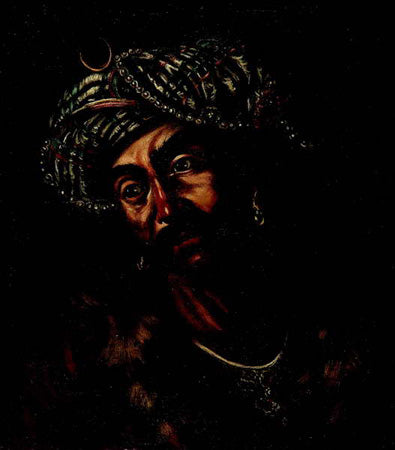
ANONYMOUS YAVUZ SULTAN SELIM PORTRAIT
Lot 220
CATALOGUE NOTES
Oil on canvas. Rentualized. 19th century.
Size: 44.5 x 39 cm
Price: 4,000 TL / $261,400.00
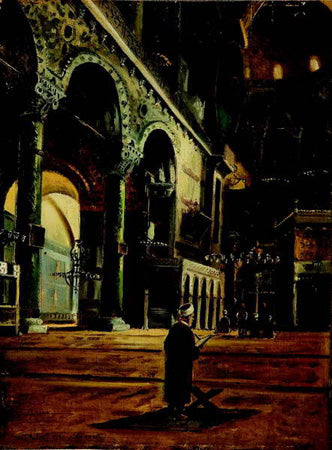
HAGIA SOPHIA
Lot 221
CATALOGUE NOTES
Signed, dated 1930. "Stamboul" written on the side of the signature. Oil on canvas. Duralite marquetry.
Size: 40 x 30 cm.
Price: 3,000 TL / $196,000.00
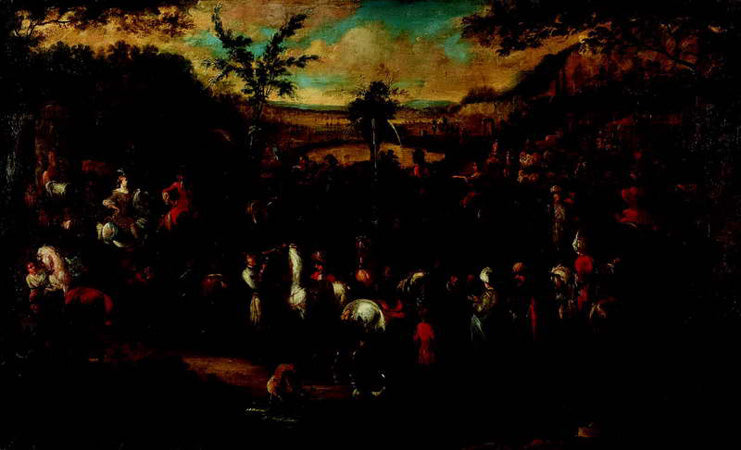
ANONYMOUS (GERMAN SCHOOL) HORSE MARKET
Lot 222
Oil on canvas. Rentualized. 18th century.
Size: 118.5 x 197.5 cm.
Price: 300,000 TL / $19,600,000.00
CATALOGUE NOTES
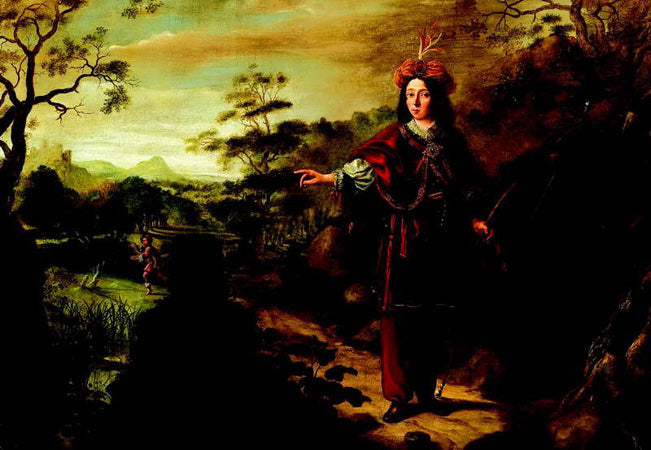
ANONYMOUS (DUTCH SCHOOL) ON THE HANDS
Lot 223
Oil on canvas. Rentualized.
Size: 121 x 175 cm.
Price: 300,000 TL / $19,600,000.00
CATALOGUE NOTES

EMILE COULON ISTANBUL
Lot 224
Size: 27 x 183 cm.
Price: 7,500 TL / $490,000.00
CATALOGUE NOTES
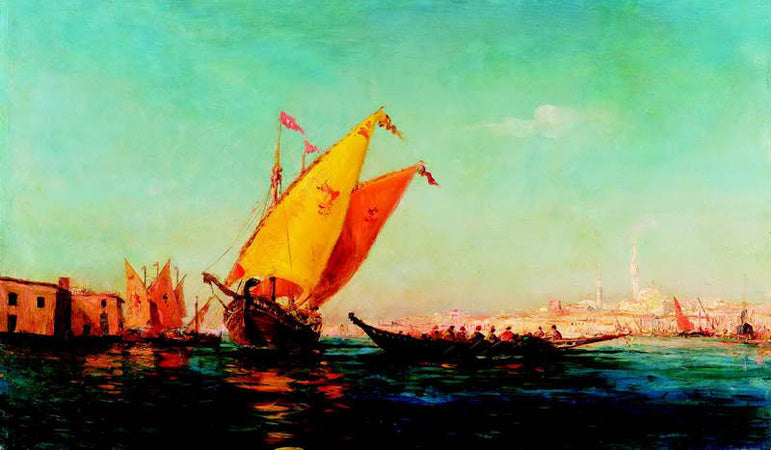
HENRI MALFROU - SAVIGNY ISTANBUL
Lot 225
Signed. Oil on canvas.
Size: 80 x 131 cm.
Price: 25,000 TL / $1,634,000.00
CATALOGUE NOTES
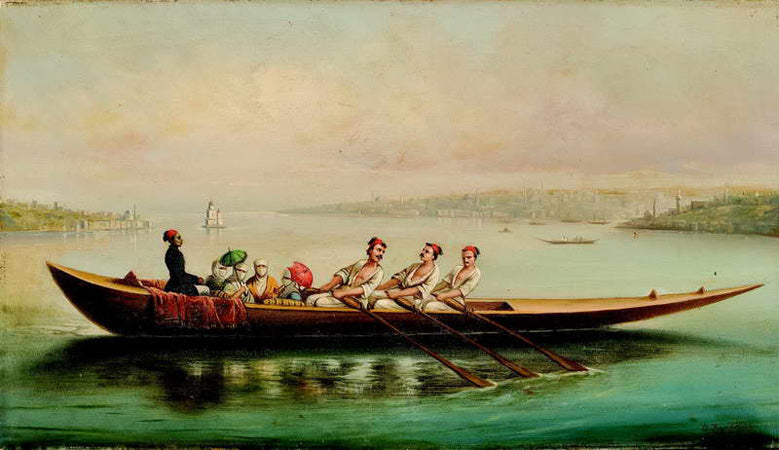
BOAT FUN ON THE BOSPHORUS
Lot 225-A
Signed. Oil on canvas.
Size: 36.5 x 64.5 cm.
Price: 12,000 TL / $784,300.00
